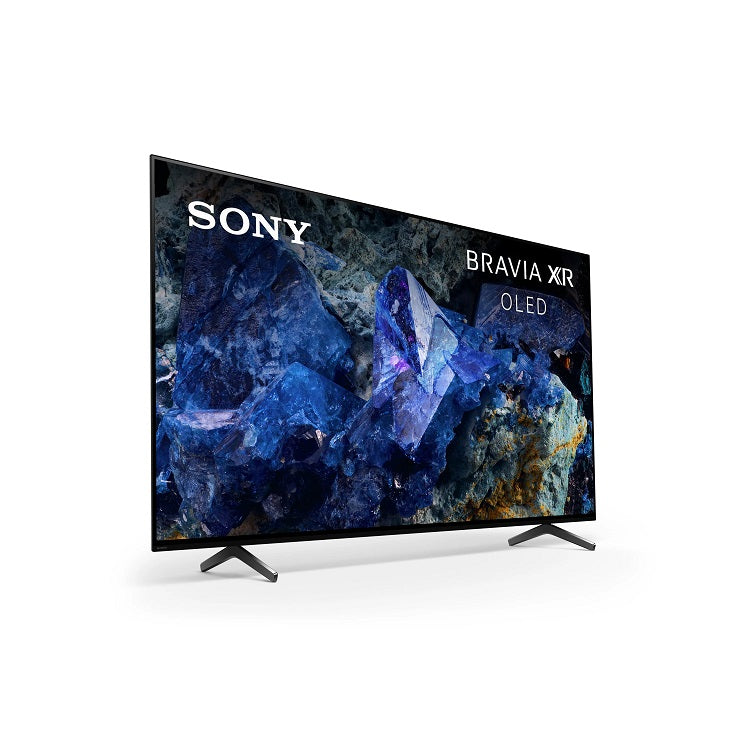
What to Expect from Future TV Brands: Trends Heading into 2026
Share
What to Expect from Future TV Brands: Trends Heading into 2026
As we inch closer to 2026, the television industry is at a turning point. Once dominated by incremental updates, today’s TV brands are rapidly shifting gears, fueled by smarter tech, immersive formats, and increasingly discerning consumers.
So what can we expect from the next wave of innovation? Let’s explore the key TV trends heading into 2026—and how the top brands are preparing to redefine your living room experience.
1. AI-Powered Everything: Smarter Picture, Sound, and Control
If 2025 was about AI-enhanced upscaling and content recommendations, 2026 will see AI integrated deeper into the viewing experience:
-
Dynamic scene-based picture adjustment using real-time analysis (brightness, contrast, and even emotion detection).
-
Voice-controlled tuning: Think beyond volume and channel—AI assistants will adjust picture mode based on genre or even your mood.
-
Adaptive sound processing that intelligently levels dialogue, enhances spatial audio, and suppresses background noise.
Who’s leading? LG and Samsung are doubling down on AI processors, but watch for Hisense and TCL to bring these features to the mid-range market fast.
2. OLED Gets Brighter, Mini-LED Gets Smarter
OLED is already beloved for its contrast, but its Achilles’ heel has always been brightness. By 2026:
-
OLED panels with Micro Lens Array (MLA) will become standard in high-end models, pushing brightness over 2,000 nits.
-
QD-OLEDs (Quantum Dot OLEDs) will continue to evolve with wider color gamuts and less image retention risk.
Meanwhile, Mini-LED isn’t standing still:
-
More dimming zones, smaller LEDs, and smarter local dimming algorithms will give OLED-like black levels without the burn-in risk.
What it means: Your next TV might make you forget which tech it even uses—because both are converging on stunning results.
3. 8K That Finally Makes Sense
8K TVs have been available for years, but content hasn’t kept up. That’s changing.
By 2026, expect:
-
Widespread 8K upscaling powered by deep learning, especially for sports and gaming.
-
Native 8K content from streamers and broadcasters (especially in Asia).
-
Affordable 65” and 75” 8K panels that don’t require a mortgage.
Samsung and LG continue to lead the 8K charge, but TCL and Sharp are pushing affordability and regional content partnerships.
4. Gaming-First TVs Will Be a Standard Category
TVs are no longer just home theaters—they’re next-gen gaming monitors. By 2026:
-
240Hz refresh rates will be offered in more high-end and even mid-tier TVs.
-
Game-specific optimization dashboards, input lag below 5ms, and DisplayPort compatibility will be common.
-
TV makers will form closer partnerships with game developers to tailor HDR tuning and latency profiles for AAA titles.
Expect LG, Hisense, and TCL to be particularly aggressive in this space—especially as cloud gaming expands.
5. Transparent and Rollable Displays Begin Their Debut (Again)
What was once a CES gimmick is now creeping toward real-world use.
-
Transparent OLEDs will likely show up in commercial spaces, and eventually high-end homes.
-
Rollable TVs, previously reserved for the ultra-rich, will slowly become more affordable as LG and Chinese brands streamline production.
This is still a niche segment, but by late 2026, these futuristic panels may be within reach—at least for early adopters.
6. Sustainability Becomes a Core Selling Point
Brands are being pushed to do more than innovate—they must do it responsibly. Heading into 2026:
-
Expect more TVs made with recycled materials, modular repairable parts, and low-energy displays.
-
Eco-friendly packaging, remote controls powered by ambient light, and software designed to extend the life of the display will become selling points.
Samsung and Sony are leading the charge, but don’t be surprised to see budget brands lean into this angle as well—especially in Europe.
7. Smarter Smart TVs: Content Hubs, Not Just Screens
In 2026, your TV won’t just be for watching—it’ll be your smart home command center.
-
Expect deeper integration with IoT ecosystems (control lights, thermostat, security, and more).
-
Brands like Google TV, Tizen, and webOS will evolve with custom dashboards, family profiles, and contextual search that bridges streaming and social media.
-
TVs will even start offering personalized fitness, education, and productivity tools right from the main screen.
So, What Should You Expect as a Buyer in 2026?
Whether you're upgrading your current setup or waiting for a truly game-changing release, here’s what’s coming your way:
-
Picture quality that adapts to your room, content, and preferences.
-
Gaming features that rival top-tier monitors.
-
More sustainable, smarter, and integrated designs.
-
A clear path to 8K and beyond—with fewer compromises.
In short: the TV of 2026 isn’t just for watching. It’s built for living.
